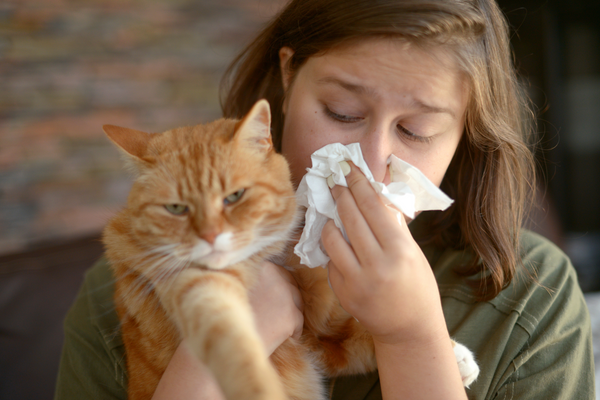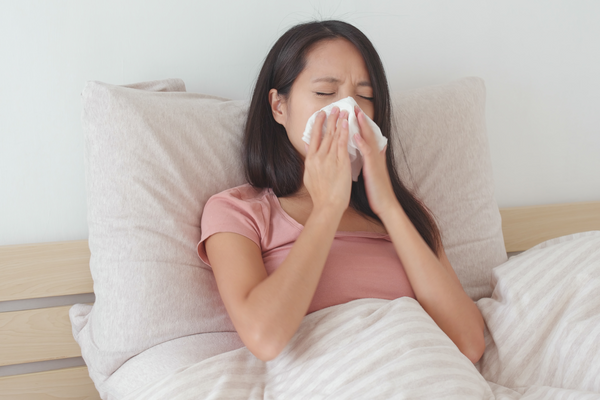It's Time to Bid Bleach Farewell, For Good. Here's Why

Bleach. It’s a product that has been lurking in many household cabinets for generations. Most of us were raised with proud mothers or grandmothers who used bleach to clean the bathroom, kitchen, and floors, as a laundry additive to brighten the towels and linens, and even in dishwater to wash the dishes. But the reality is, the whitening power of bleach comes at a cost. In most cases, the dangers of using bleach anywhere around the home may outweigh the benefits – especially if you have small children or pets. If bleach is a part of your regular cleaning routine, it’s a good idea to swap it out for a gentler, people and planet-friendly alternative.
What is Bleach?
Although we often use the word “bleach” as if it were only one substance, it’s a generic term referring to a group of compounds used in various ways. The most popular type of bleach is ordinary household chlorine bleach (also known as “liquid bleach”), which is a water-based product that contains a chemical called sodium hypochlorite (NaOCl). Another type of bleach is oxygen bleach, which contains hydrogen peroxide or other compounds that release peroxide when mixed with water. Bleach also comes as a powder in the form of a chemical called calcium hypochlorite.
Chlorine bleach has been around for centuries, initially being mass-produced for the textile industry to do what natural sun bleaching could do to fabrics in a matter of minutes rather than days. By the early twentieth century, bleach was widely available for home consumers and quickly became a household cleaning staple.
Direct Reactions to Bleach
Bleach is highly irritating to those who use it and to those who are indirectly exposed to its noxious fumes. It is of the utmost importance to always wear personal protective equipment (such as eye protection, a mask, and gloves) and have excellent ventilation when using bleach indoors. Bleach itself is very reactive with the human body and can be very harmful.
When bleach is inhaled, it’s very corrosive to the skin, eyes, and lungs. The fumes from bleach can also cause stinging sensations in the eyes and nose, coughing, shortness of breath, migraines, muscle weakness, abdominal discomfort, esophageal perforation, nausea, and damage to the nervous system. Breathing high levels of bleach fumes can cause pulmonary edema – fluid buildup in the lungs. Children are at greater risk of breathing bleach vapors because their lungs are still developing.
In a study published in the Journal of Pediatrics, over a 16-year period, more than 250,000 children under the age of five were rushed to the emergency room for household cleaner exposure. The most common exposure was bleach, either through ingestion, inhalation, or spray bottle accidents. Children under the age of three were found to be particularly at risk. According to board-certified pediatrician Dr. Ryan Blackman, “Keeping bleach and other dangerous chemicals out of your household – and out of reach of children – is smart planning for parents with young children.”
Another study, conducted by the University of Bergen in Norway and published in the American Thoracic Society's American Journal of Respiratory and Critical Care Medicine, found that women who work as cleaners or who regularly clean the family home using conventional bleach and ammonia-based cleaning sprays or other products, have a more significant decline in lung health over time than women who do not clean. In fact, the researchers estimated that the amount of lung function these women lost was roughly equivalent to smoking an entire pack of cigarettes every single day. During the study, those with the highest exposure to harsh cleaning chemicals experienced the most severe lung decline.
When using bleach inside a poorly ventilated home, the air indoors becomes polluted with toxins, endangering the health of everyone inside. People who have allergies or respiratory problems, such as asthma or COPD, should always avoid using bleach, as it can trigger an asthma attack or cause severe irritation.
Never Mix Bleach with Other Chemicals
Bleach is highly reactive when combined with other chemicals. When mixed with ingredients in many common household cleaners (for example, ammonia-based glass cleaner), the results can be severe or even fatal. If you aren’t sure which ingredients you’re using to clean, inadvertently mixing them can be a dangerous mistake. Here are three chemicals that are commonly combined with household bleach and the toxic results:
Household Bleach + Ammonia = Chloramine Gas
This is a common and dangerous combination that can easily be avoided by checking the ingredients list of your cleaning products before use to ensure that you’re not unknowingly using these products together. For example, most standard glass and window cleaners contain ammonia, so never mix those with products that contain bleach. Why? When bleach and ammonia are combined, they react together to form toxic chloramine gas. Chloramine will burn your eyes, throat, and respiratory system and can lead to internal organ damage. Worse, if there is enough ammonia in the mixture, toxic and potentially explosive liquid hydrazine may be produced.
Household Bleach + Vinegar = Chlorine Gas
Did you know? Mixing bleach and vinegar results in toxic chlorine gas, which irritates the eyes, skin, mucous membranes, and respiratory system, and may cause chemical burns, permanent lung damage, or even death. Chlorine gas has also been used in chemical warfare, so it’s certainly not something you want to be creating and inhaling inside your home. So why do people continue to mix these cleaning agents? There are two reasons. The first is that vinegar lowers the pH of bleach, making it a “better” disinfectant. The second is that people don’t realize how quickly the chemical reaction happens or how dangerous it actually is. When people hear that mixing common household chemicals makes them more effective disinfectants, they don’t always realize that the germ-killing boost isn’t going to make enough of a difference to justify the danger. It’s simply not worth the risk.
Household Bleach + Isopropyl Alcohol = Chloroform
Regular household bleach contains sodium hypochlorite, which reacts with ethanol or isopropyl alcohol to produce chloroform, and other nasty compounds, such as hydrochloric acid, chloroacetone, or dichloroacetone. According to the EPA, even exposure to low levels of chloroform is dangerous, resulting in dizziness and nausea. Exposure to high levels of chloroform can cause permanent damage to your nervous system, kidneys, liver, eyes, and respiratory system, or even death.
In case of bleach poisoning, contact Poison Control: 1 (800) 222-1222
The Environmental Impacts of Bleach
In addition to the laundry list of adverse health effects and potentially toxic chemical mixtures, bleach is a known environmental pollutant. Alarmingly, manufacturers that use chlorine bleach often release it into our waters along with other liquid industrial waste. But it’s not just the manufacturers to blame; when we use bleach in our homes, it gets washed down the drain and inevitably winds up in our waters.
When it’s in the water, chlorine bleach mixes with other minerals and elements already present in the water, which results in the production of new toxins. These toxins include dioxins, furans, and PCDDs called “persistent organic pollutants (POPs),” named as such because they stay in the water and can take decades to disappear completely. According to Greenpeace, dioxin is one of the most dangerous chemicals in history and warns others that it can contribute to cancer, endocrine disorders, and other health risks.
Industrial factories that use bleach release toxins into the air through the ventilation and exhaust processes. Some parts of the chlorine bleach and other byproducts stay in the air, creating more pollution. These bleach by-products in the air eventually reach the Earth’s atmosphere and ozone layer as well. According to a report by Audubon Magazine, bleach is associated with ozone depletion and has long-term environmental effects that impact global warming.
It’s time to clean up your cleaning routine by ditching bleach, for good!
Thankfully, You Don’t Need Bleach for a Clean Home

While it may be necessary to use chlorine bleach in your swimming pool, you don’t need to use it to have a clean home. With all of the risks of using bleach, it makes sense to consider gentler cleaning products that are free from harsh chemicals. And that’s precisely why we created Vital Oxide.
At The Ecology Works, we believe that cleaning shouldn’t be a hazard.
Vital Oxide is an all-purpose cleaner, EPA-registered disinfectant, and more. Vital Oxide is fragrance-free, dye-free, VOC-free, sulfate-free, phthalate-free, allergen-free, ammonia-free, and bleach-free. Vital Oxide’s hero ingredient, stabilized chlorine dioxide (ClO2), harnesses the power of oxygen to create a powerhouse cleaner (perfect for tough messes and day-to-day cleaning), germ killer, mold remover, and odor eliminator. And while it has chlorine in its name, chlorine dioxide is very different from chlorine bleach. Unlike bleach, which has a harsh odor and forms trihalomethanes when mixed with water, making it highly corrosive – chlorine dioxide breaks down into simple salt, making it much less corrosive to surfaces and more versatile in a variety of application situations.
With Vital Oxide, you don’t have to worry about exposing your loved ones to harsh chemicals. Vital Oxide can be used in every room in the home – from the bathroom and kitchen to the baby’s nursery and laundry room – Vital Oxide does it all, without harsh fumes, harmful residues, or alarming safety warnings. After use, Vital Oxide breaks down into simple salt and produces no harmful byproducts, making it an Earth-friendly choice.
Have questions about cleaning or reducing harsh chemicals in your home? We have answers! The Ecology Works has been leading the way in green cleaning since 1993. We can help you select the products you need to live a better, allergen-free life. Please feel free to Contact Us or message us on Facebook. No question is too small! We're here to help.



